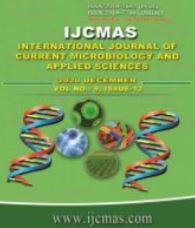


 National Academy of Agricultural Sciences (NAAS)
National Academy of Agricultural Sciences (NAAS)

|
PRINT ISSN : 2319-7692
Online ISSN : 2319-7706 Issues : 12 per year Publisher : Excellent Publishers Email : editorijcmas@gmail.com / submit@ijcmas.com Editor-in-chief: Dr.M.Prakash Index Copernicus ICV 2018: 95.39 NAAS RATING 2020: 5.38 |
A study was conducted among 75 Extension Officials of State Department of Agriculture in Theni District of Tamil Nadu to analyse the utility and Effectiveness of Extension Methods. The study revealed that among all the extension methods irrespective of the classification, Farm and home visit was frequently utilized by the extension officials (58 per cent).As far as group methods are concerned, meetings (100 per cent) and trainings (96 per cent) were found to be frequently utilized methods followed by tours(68 per cent) and demonstration (68 per cent). Leaflets (96 per cent), Folder (84 per cent) and Booklet were the frequently utilized extension literature which came under mass method. Mobile services were reported to be frequently utilized by majority (84 per cent) of extension officials. Majority of extension officials reported that they utilized sometimes participatory methods of Focus group discussion (76 per cent), Participatory workshop (64 per cent) and brainstorming (52 per cent). Meetings (72 per cent t & 28 per cent), Demonstrations (68 per cent & 24 per cent) and Trainings (56 per cent) and (44 per cent) were the group methods rated to be very effective to effective by extension officials with REI of 372,356 and 348 respectively. Variables namely Skill in choosing appropriate extension methods (X5) and experience in employing extension methods (X7) were found to be positive and significantly contributing towards the Relative Effectiveness of Extension methods in Public Extension system at five per cent level of probability.
 |
 |
 |
 |
 |